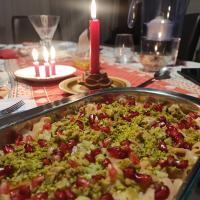Copy Link
Add to Bookmark
Report
Cider Digest #0736

Subject: Cider Digest #736, 9 April 1998
From: cider-request@talisman.com
Cider Digest #736 9 April 1998
Forum for Discussion of Cider Issues
Dick Dunn, Digest Janitor
Contents:
Re: Cider Digest #735, 5 April 1998 (Ian Merwin)
Re: American Cider Apple Trees ("Don Wegeng")
German cider apples (Knut Riggert)
Apple Replant (Terence Bradshaw)
Send ONLY articles for the digest to cider@talisman.com.
Use cider-request@talisman.com for subscribe/unsubscribe/admin requests.
When subscribing, please include your name and a good address in the
message body unless you're sure your mailer generates them.
Archives of the Digest are available for anonymous FTP at ftp.stanford.edu
in pub/clubs/homebrew/cider.
----------------------------------------------------------------------
Subject: Re: Cider Digest #735, 5 April 1998
From: Ian Merwin <im13@cornell.edu>
Date: Sun, 5 Apr 1998 20:08:31 -0500
Folks-
Since it's a topic we've been researching for more than a decade I can't
resist Andrew Lea's "any pomologist" cue about apple replant problems! The
Specific Apple Replant Disease that Andrew referred to occurs in some
English but relatively few other orchards around the world (G.D.F. Sewell
has published extensively on the topic). It is "specific" to apples (i.e.
would not affect cherries), and most common on fine textured soils. Soil
fumigation or steam sterilization are helpful remedies in many cases.
Much more wide-spread and common are non-specific replant problems. These
occur in many soil types, and can be just as severe when apple trees are
planted after various other crops including other fruits, legumes, hay,
etc. Parasitic nematodes are often implicated in this disease syndrome,
but are rarely the only pathogens involved. Planting new trees offset from
the previous tree sites will often help control the problem (for example in
the previous drive lanes between tree rows). If you plant large caliper
apple trees with a good root system, adjust the soil pH and add some
composted manure when backfilling around their roots at planting, control
weeds beneath the trees, and water them every week or so (in the absence of
a good soaking rain) during their first year, you should be able to
establish a productive tree in most previous fruit tree sites.
While we're on the topic-Wegeng did not indicate where he wants to plant
those trees, and it really does matter. Each apple variety requires some
minimum number of frost-free "growing degree days" (ranging from 100 to 190
days for different cultivars) as well as a certain amount of accumulated
daily mean temperature above 50 F (10 C) (ranging from 2000 to 3000) "heat
units" above the 50 F threshold. The best varietal choice is thus very
dependent upon where one lives. To make matters even more complicated,
there is little correlation between cold tolerance during the dormant
season and the growing days required to properly mature and ripen a given
apple variety. For example, Granny Smith is able to withstand severe
winter low temperatures in USDA climate zones 3 or 4, but requires a 190
day growing season to properly ripen its fruit (which few zone 3 or 4
regions can provide). Many of the best French, English or Spanish hard
cider varieties are very late ripening (November or even early December)
and may not attain their potential fruit quality in the inland northern US
or Europe.
****************************
Ian Merwin (im13@cornell.edu)
Associate Professor of Pomology
Dept. of Fruit and Vegetable Science
118 Plant Science
Cornell University, Ithaca, NY, 14886
------------------------------
Subject: Re: American Cider Apple Trees
From: "Don Wegeng" <dwegeng@csi.com>
Date: Sun, 5 Apr 1998 20:17:50 -0400
I really appreciate all of the responses that I have received regarding my
query about American cider apple varieties. As I should have guessed,
there's a lot of room for experimenting here. A couple people mentioned
Gravenstein, Arkansas Black, and Black Twig, so I will definitely give them
consideration. An employee at Miller Nurseries told me that their cider
really perked up when they started adding Calville Blanc (though this may
have been for an unfermented cider).
While all of the information that I was received was excellent, I would
like to specifically address a couple responses. Bill Rhyne mentioned
crabapples. I have read about using desert crabapples in a couple books,
and it would seem that these are very difficult to find (either as trees or
as fruit). I found a reference on the web (from Ohio, I believe) that
mentioned four potential varieties: Florence Hibernal, Red Siberian,
Transcedent, and Martha. Finding specific information on crabapple
varieties is quite difficult!
Andrew Lea mentioned the possibility of grafting. This might be an option
for one of the trees, which I cut off about one foot above the ground (the
stump is about eight inches in diameter). Would it be reasonable for me
(with zero experience) to try to graft something onto this stump? If so,
does anyone have any suggestions on where I might obtain suitable grafting
material? I live in the Rochester, NY area.
Again, many thanks for all of the help. It says a lot about the cider
community when so many professionals and knowledgeable amateurs are so
quick to offer help and advice. If anyone else would like to offer
comments please do so, as I can use all of the help that I can get!
/Don
dw@gsp.org
------------------------------
Subject: German cider apples
From: Knut.Riggert@t-online.de (Knut Riggert)
Date: Tue, 7 Apr 1998 20:53:47 +0200
Has anybody out there information on German (cider) apples varities, what sort
of characteristics they have and how suitable they are for producing a decent
cider? Any experiences how to blend them.
Knut Riggert
e-mail : Knut.Riggert@t-online.de
------------------------------
Subject: Apple Replant
From: Terence Bradshaw <madshaw@quest-net.com>
Date: Wed, 08 Apr 1998 19:34:49 -0400
But be careful NOT to plant the new trees in the same
> spaces as the old ones. If you do, they'll never thrive - they must go
> into clean soil which haven't had apples before (just like roses). I'm not
> a plant pathologist, but my understanding is that this problem (known as
> SARD, for Specific Apple Replant Disease) is caused by soil fungi such as
> Pythium, and as far as I know there are no effective soil treatments to get
> around this - perhaps someone else on the Digest could confirm this?
>
Andrew is right here about not planting into groud which has had any
previous apples growing on it in the last year or two, especially if
they were larger trees. Apple Replant Disease is generally thought to
be caused by plant-parasitic nematodes, however, which can be
controlled. Till the soil well in a 4-6' circle and add plenty of
compost, also to be tilled in. This year plant a green manure such as
clover or oats and till into the soil next spring. Plant into this soil
now if you are rushed, or repeat another year for best results....
- --
Terence L Bradshaw
Pomona Tree Fruit Service Golden Apple Orchard
RD 1 Box 150 Whalley Road
Chelsea, VT 05038 Charlotte, VT 05445
tbradsha@zoo.uvm.edu http://www.uvm.edu/~tbradsha/home.html
------------------------------
End of Cider Digest #736
*************************























